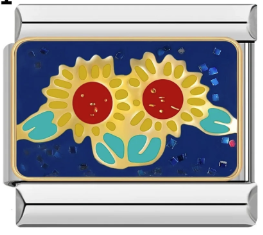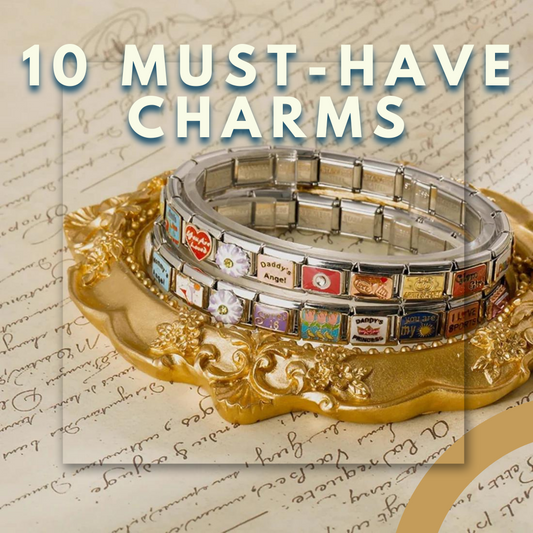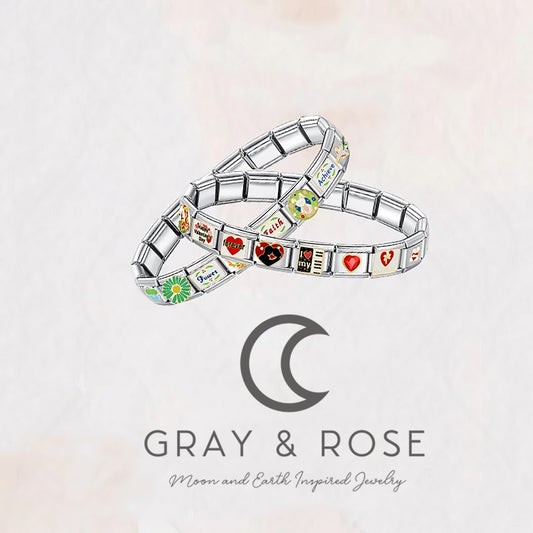When it comes to choosing a gemstone for an engagement ring or a piece of fine jewelry, diamonds have traditionally been the go-to choice. However, in recent years, a contender has emerged, challenging the diamond's reign — moissanite. But the question remains: Is moissanite as good as a real diamond? Let's delve into this topic and uncover the truth behind this sparkling debate.
What is ?
Moissanite is a gemstone born from the stars. It was first discovered in 1893 by a scientist named Henri Moissan while examining rock samples from a meteor crater. At first, Moissan mistook the crystals for diamonds due to their striking similarities. However, upon closer inspection, he discovered that these were silicon carbide crystals, a unique and rare gem in its own right.
Today, most moissanite sold in the jewelry market is lab-created, ensuring ethical sourcing and production. A quick glimpse at the Gray & Rose moissanite collection provides evidence of this gemstone's beauty and allure, rivaling that of its diamond counterparts.
The Brilliance and Fire of Moissanite
Sparkling Intensity
One of the standout features of moissanite is its brilliance. Brilliance refers to the light reflected from the interior of a gemstone. Due to its unique refractive properties, moissanite often outshines diamonds in terms of sparkle. This feature can be especially captivating in statement pieces like the 2-carat halo engagement ring from Gray & Rose.
Dazzling Fire
Fire is the dispersion of light into the colors of the rainbow. Again, moissanite has a slight edge over diamonds when it comes to fire. When light hits a moissanite, it breaks down into a spectacular display of colors, often more so than a diamond would.
Durability and Hardness
Diamonds are famed for being the hardest substance on Earth. Ranking a perfect 10 on the Mohs scale of hardness, they're incredibly resistant to scratching. Moissanite, while not as hard as diamonds, is still impressively durable, scoring a 9.25 on the Mohs scale. This makes it one of the hardest gemstones available and a suitable alternative for everyday wear, like in moissanite engagement rings.
Price and Affordability
Diamonds and Their Premium
The price of diamonds has historically been high due to various factors, including mining costs, demand, and branding. While there's no denying the prestige and cultural significance of diamonds, their cost can often be prohibitive for many.
Moissanite's Competitive Edge
On the other hand, moissanite offers similar beauty and durability at a fraction of the price. For those seeking the sparkle of a diamond without the hefty price tag, moissanite presents a compelling alternative.
Ethical Considerations
Another factor pushing many modern consumers towards moissanite is ethics. The diamond industry, while making significant strides in recent years, has been tainted by concerns over "blood diamonds" or stones mined in war zones and sold to finance armed conflict. Lab-grown moissanite avoids these ethical pitfalls, ensuring peace of mind with every purchase.
In the end, the choice between moissanite and diamond boils down to individual preferences, values, and budget. While diamonds continue to enchant with their timeless allure, moissanite has carved out a niche for itself, captivating hearts with its brilliance, fire, and ethical production.
Stay tuned as we delve deeper into other facets of the moissanite versus diamond debate in our next sections.
Moissanite vs. Diamond: A Closer Examination
The debate between moissanite and diamonds doesn't merely hinge on sparkle or price. To make an informed decision, it's vital to delve deeper into the distinct characteristics of each gemstone. Here, we'll explore facets like color, clarity, and environmental impact.
Color Variations in Gems
The Diamond Spectrum
Diamonds are typically graded on a color scale from D (colorless) to Z (light yellow or brown). Most consumers strive for colorless or near-colorless diamonds, as they're perceived as more valuable.
Moissanite's Radiance
Moissanite, in its natural form, tends to have a yellowish hue. However, lab-created moissanites, which dominate the market, can be engineered to be near-colorless, rivaling top-grade diamonds. While some moissanite might exhibit a slight green or gray tint under certain lighting, many find this unique characteristic charming.
Clarity and Inclusions
Diamond’s Natural Flaws
Inclusions are tiny imperfections inside a gem. Diamonds, being natural stones, often have these inclusions, which can range from minuscule dots to noticeable flaws. The clarity grade of a diamond denotes the presence (or absence) of these inclusions.
Moissanite’s Lab Advantage
Moissanite, particularly those created in a lab, generally has fewer inclusions. This ensures that the stone appears pristine to the naked eye, enhancing its appeal for those who prioritize clarity.
The Environmental Aspect
The Ecological Impact of Mining
Diamond mining can be ecologically damaging. Large-scale mining operations often lead to habitat destruction, soil erosion, and other environmental issues. While ethically-sourced diamonds address some concerns, the ecological footprint remains a point of contention.
Moissanite’s Green Credentials
Given that most moissanites are lab-grown, their environmental impact is considerably lower. The controlled environment ensures fewer resources are used, and the ecological balance remains undisturbed. For the environmentally conscious consumer, moissanite offers both beauty and peace of mind.
Popularity and Market Trends
Diamonds have enjoyed a long-standing history of being the preferred choice for engagement rings and jewelry. This tradition is rooted in marketing campaigns, cultural norms, and the diamond's natural allure.
Moissanite, being a relatively newer entrant, has witnessed a surge in popularity, especially among younger consumers. The combination of affordability, ethical production, and mesmerizing sparkle makes it a favorite for many modern couples.
Personalizing Your Choice
Choosing between diamond and moissanite is a deeply personal decision. For those who cherish traditions and the classic elegance of a diamond, it remains an unbeatable choice. However, for those who lean towards a blend of modernity, ethics, and value for money, moissanite shines brightly.
If you’re considering a moissanite piece, exploring collections like those at Gray & Rose can offer a clearer perspective on its beauty and versatility.
The Future of Gemstones: Moissanite's Growing Appeal
As we move into an era marked by increasing environmental consciousness, technological advancement, and changing perceptions of value, the world of gemstones is evolving. Moissanite's emergence as a frontrunner in this shifting landscape heralds exciting prospects for the future of jewelry.
A Sustainable Choice
The Eco-Friendly Appeal
As we've touched upon, the environmentally friendly aspect of moissanite is one of its most compelling attributes. In a world grappling with climate change and environmental degradation, choosing sustainable options has never been more crucial. Moissanite’s reduced carbon footprint, coupled with ethical production, aligns well with the values of the eco-conscious consumer.
Promoting Ethical Jewelry
Beyond its minimal environmental impact, moissanite promotes an industry free from the shadows of conflict and exploitation. The transition towards lab-grown gemstones can reshape the jewelry industry, promoting transparency and fairness.
Technological Marvels and Lab-Grown Stones
The Precision of Lab Creation
The technology behind lab-grown moissanite has come a long way. Today, scientists can create stones that are almost indistinguishable from their natural counterparts. This precision ensures that consumers receive high-quality stones, devoid of the imperfections often found in natural gems.
Future Innovations
The realm of lab-grown gemstones is only in its infancy. As technology advances, we might see even more varieties of gemstones crafted in labs, each with unique attributes tailored to consumer preferences.
The Cultural Shift in Jewelry Selection
While diamonds have held the cultural spotlight for decades, driven in part by powerful marketing campaigns, modern narratives are shifting. Today’s consumers are influenced by a blend of tradition, ethical considerations, sustainability, and individualism.
Moissanite, with its modern origins and ethical appeal, aligns seamlessly with this evolving narrative, making it a gemstone for the contemporary age.
Making an Informed Choice: Diamonds or Moissanite?
It's essential to understand that neither diamonds nor moissanites are inherently superior; they each cater to different tastes, values, and budgets.
For those who cherish the age-old allure and status of diamonds, this gem will always hold a special place. On the other hand, for those drawn to moissanite's sparkle, ethical origins, and affordability, it represents the future of luxury jewelry.
Before making a purchase, explore and compare. Collections, like the beautiful range at Gray & Rose, offer a treasure trove of moissanite pieces that can help you gauge its appeal.
Final Thoughts
As with all matters of personal taste, the best gemstone is the one that resonates with you. Whether you're captivated by the timeless elegance of diamonds or the modern charm of moissanite, your choice should reflect your story, values, and vision for the future.




















